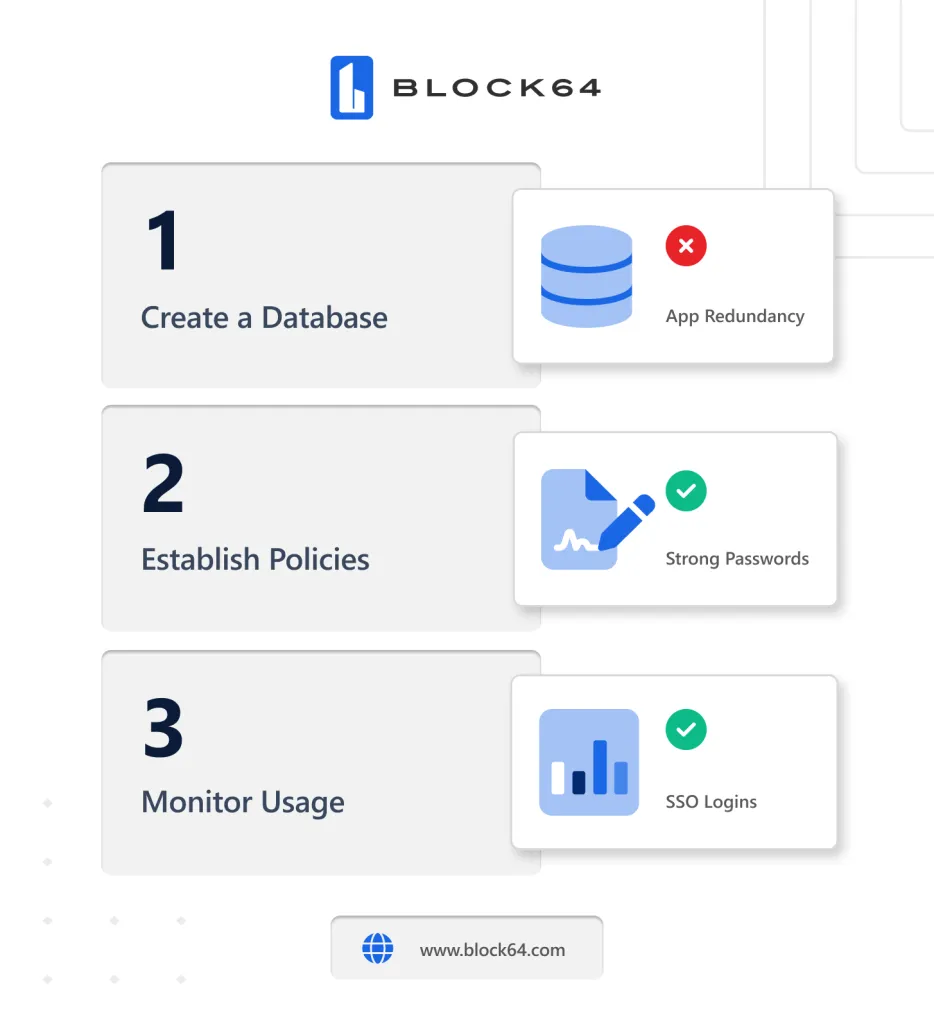SaaS tools have revolutionized how businesses and individuals access software applications, with their ease of use, scalability, flexibility, and cost-effectiveness. Simply put: They’re powerful productivity drivers. But the reality of having a distributed workforce with access to thousands of apps at their fingertips is also causing a staggering growth of "SaaS sprawl" and Shadow IT.As SaaS proliferates across enterprises with the rise of hybrid work, it’s important to be aware of the risks and manage accordingly. Here we provide our best advice on modern SaaS management.
Are You Suffering from SaaS Sprawl?
“SaaS sprawl” refers to the uncontrolled and unchecked use of SaaS applications spreading through many organizations. The problem is growing.According to Gartner, worldwide spending on SaaS tools is expected to reach $243 billion in 2023. This trend highlights the increasing reliance on SaaS applications across various industries. Large enterprises are reported to use around 254 different SaaS applications on average, while smaller businesses also have substantial usage. Moreover, it's noted that more than half of SaaS licenses are not used regularly, leading to issues such as budget waste and security threats.Other studies indicate organizations failing to manage their SaaS portfolios effectively are likely to overspend by at least 25% due to incorrect entitlements and overlapping tools. This unmanaged growth poses financial, security, and operational risks.
How SaaS Addresses Your Business Needs
SaaS has taken the headache out of some of the issues with conventional software. Traditionally, software was sold at an upfront cost with ongoing support fees. Usually, it was a perpetual license – where the owner had the right to use the software indefinitely.SaaS providers use a subscription model, generally a monthly or annual fee. Prices are competitive with on-premises software. Many apps offer a freemium version, which gives free service with limited functionalities. Subscription plans can easily be scaled up or down to accommodate changing business needs.These apps can be installed and deployed almost instantaneously, without the need for traditional partners or intermediaries, making them much easier to use. SaaS apps are delivered over the internet, eliminating the need for complex installations and updates. They are also generally updated more frequently than non-SaaS software, meaning users have access to the latest features and security improvements.
The Risks that Come with SaaS Sprawl
Despite the many advantages of using SaaS over traditional software, there are plenty of risks.In addition to excessive amounts of SaaS tools being downloaded at the enterprise level, many business units are purchasing their own subscriptions or downloading freemium tools without IT’s oversight. These unregulated SaaS budgets can quickly grow out of control.SaaS subscriptions and log-ins also expand the security risk surface. The more SaaS providers used, the more subdomains and APIs are generated to maintain integrations. Your business is as protected from threats as the weakest SaaS provider you are using.SaaS providers are prone to data breaches, including with the use of single sign-on (SSO). SSO lets users log into multiple applications with one set of credentials, like a Microsoft account. Okta, a SSO provider, saw a series of security breaches last October after what they believe was one of their employees signing into their personal Google account on a company-owned device.With more SaaS tools being used there is also a greater opportunity for users to work in silos. For example, using a variety of project management tools can create fragmentation and hinder productivity.
How to Take Control of Enterprise SaaS Use

It’s clear that SaaS sprawl is an issue that you should be aware of. Here's what we recommend as the steps you should take to wrangle SaaS use in your organization.1. Create a Single Source of Truth and Simplify SubscriptionsIt all starts with knowing what you have and what you're using. Create a centralized database to get a clear picture of SaaS products being used or subscribed to. If you can't measure it, you can't manage it.Look for ways to cut waste and simplify apps to manage. Create an inventory of SaaS products and look for application redundancies and instances of low use. For example, you shouldn’t pay for Webex if you have Microsoft Teams. Recognize which teams or departments have the highest costs for SaaS products and investigate. While you should use a data and metric-driven strategy to cut SaaS spending, remember that reducing software shouldn’t negatively impact company growth or innovation.2. Establish Policies and CommunicationsNow that you have a clear sense of your SaaS usage, it’s important to establish clear policies and communicate those to employees. Develop guidelines and policies on using SaaS products. Identify vendors of choice for specific job functions and build a roster of approved apps and a blacklist. Provide internal communications on app policies and why they exist. Let people know – you can’t defeat shadow IT without some sunlight. It’s important to also encourage users to have strong passwords and use two-factor authentication.3. Monitor SaaS Subscriptions and UsageContinue to monitor how SaaS products are being used monthly on a centralized database such as ours at Block 64. Track SSO logins, last login dates, and last run dates for on-prem software. Identify tenders that overlap and downsize or cancel unnecessary subscriptions. Continue to monitor for unauthorized apps and remediate any overlap.
How Block 64 Can Help
Block 64's Discovery & Insights platform recently added an innovative feature to help fight SaaS sprawl. Our SaaS Management solution provides detailed visibility into user activities on SaaS apps integrating with popular SSO and OAuth providers. It automatically captures all activity on SaaS apps being logged into using enterprise SSOs, such as EntralD, Google, and Okta.Authentication logs are aggregated, so organizations can identify which SaaS solutions are being used, by whom, and when. SaaS Management can be used to simplify the inventory, monitoring, and reporting of apps for you to take action sooner.Want to learn more? Request a free trial and demo, or contact our sales team to learn more about how Block 64 can transform your SaaS management, today.